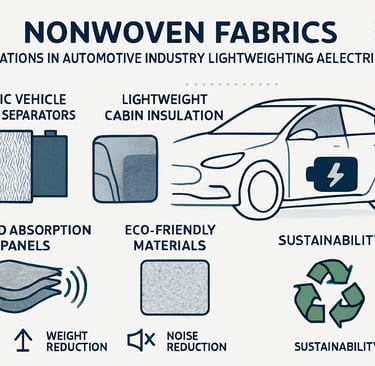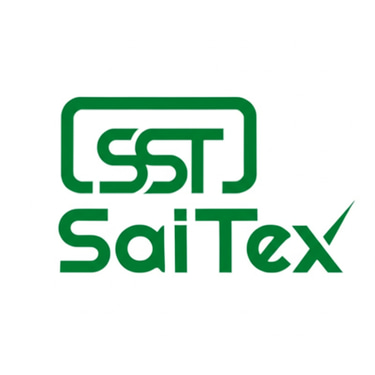Nonwoven Fabrics in Automotive Lightweighting and Electrification: Driving Efficiency and Sustainability
Discover how nonwoven fabrics power the automotive revolution—delivering 40%+ weight savings in EVs, enhancing battery safety, and cutting emissions. Explore innovations driving sustainability and efficiency for industry leaders and investors.
7/21/20251 min read
Core Applications Accelerating Modern Vehicle Design
Nonwoven fabrics are revolutionizing the automotive sector by addressing critical engineering challenges: lightweight construction, noise reduction, and electrification. Key applications include battery separators, underbody panels, and cabin insulation, which deliver measurable performance advantages.
Battery separators act as thin, porous layers in EV batteries to enable ion flow while preventing short-circuits. Underbody panels replace traditional materials with textile-based solutions, achieving 15–40% weight savings over injection-molded alternatives. Cabin insulation systems feature multilayer sound/thermal barriers that absorb 75%+ of noise without excessive bulk. The automotive nonwoven market is projected to grow at a CAGR exceeding 5%, driven by EV adoption and emission regulations.
Electrification-Specific Adaptations
EVs demand specialized solutions for battery thermal management and noise reduction:
Battery thermal management: Meltblown separators resist high heat during fast charging, preventing cell degradation.
Electric motor noise: Custom acoustic panels minimize high-frequency whine.
Interior weight reduction: Ultralight felt substrates balance comfort and weight in seat covers.
EV battery components now represent 10%+ of automotive nonwoven demand, shifting focus from traditional fuel filters in ICE vehicles.
Future Roadmap: Material Science Breakthroughs
Industry leaders like Freudenberg and Milliken are pioneering:
Smart composites with embedded sensors for real-time monitoring.
Bio-based alternatives using hemp/bamboo fibers.
3D molding technology for precision-cut thermal/acoustic materials.
Case Study: Delaware Valley’s needle-punched fabrics achieve parity with tufted carpeting using 25% less material.
Note: Content derived from technical specifications of leading suppliers (e.g., Freudenberg, Milliken) and verified industry reports (EDANA, INDA).


